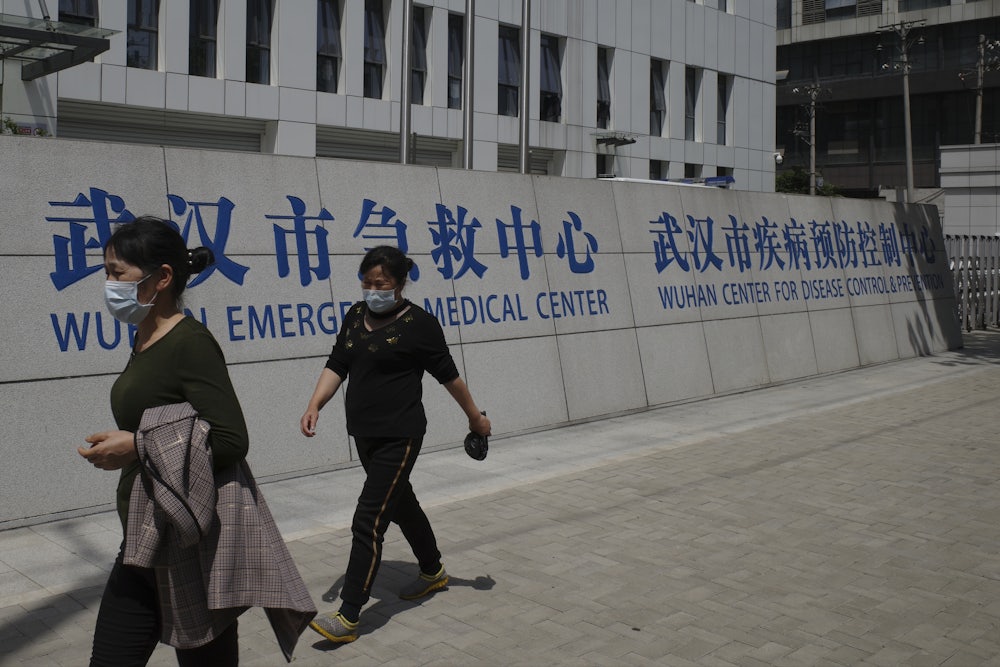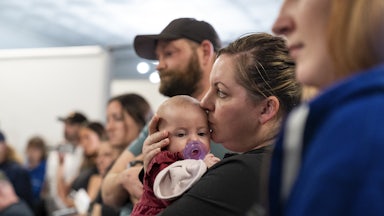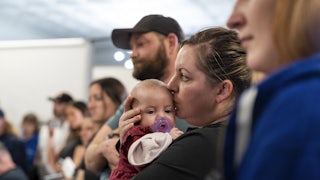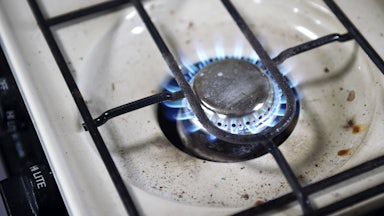When multiple news outlets reported last week that both the Department of Energy and the FBI now believe the Covid-19 pandemic originated in an accidental leak from a lab, Republicans, along with many others on the internet, quickly declared victory for the “lab leak” hypothesis, reiterating their criticism of viral research, which they see as reckless and dangerous. In the past few months, conservative politicians have expressed interest in curtailing such research even in the United States—especially so-called “gain of function” research, a field that they have condemned for potentially leading to more transmissible or virulent pathogens among people.
Yet while these two agencies’ conclusions were based on intelligence that has not been made publicly available, a close reading of initial reporting shows almost the exact opposite of what lab leak theory proponents and conservative lawmakers have been saying: Contrary to the idea that Covid was the result of either malicious or irresponsible lab tinkering, this virus was originally found in nature before escaping from a lab, if the reports are true. That means research on natural viruses—how they evolve and, in some cases, become more lethal—may be more vital than ever.
As reported by The Wall Street Journal last week, the Department of Energy has assessed, with low confidence, that Covid was spread from a lab “mishap,” ruling out an engineered virus that was intentionally released. The FBI came to the same conclusion with moderate confidence.
Without experts outside of the government being allowed to examine the report, it’s difficult for the public to know how reliable or accurate these conclusions are. Yet these findings are consistent with available evidence showing that SARS-CoV-2 is likely of natural origin, not created in a petri dish. It either traveled through animals or, as this intelligence report claims, through researchers who collected a sample from nature. But in both scenarios, it spilled over from wildlife at some point.
The only question is where that spillover happened. And although we may never get a complete answer on that, the ultimate lesson remains the same, researchers say: No matter what happened in the initial spillover, we know that we need to improve monitoring of animals and people coming into increased contact with each other in a changing world. We need to reexamine patterns of land use and deforestation. And rather than curtailing funding for viral research, we need to bolster it, making it safer and more clearly regulated, before the next crisis hits.
It’s difficult to unpack exactly what the intelligence reports say, outside experts told me. “It’s very difficult to comment on it, because we don’t actually know what evidence was used to make that assessment,” Angela Rasmussen, a virologist at the Vaccine and Infectious Disease Organization at the University of Saskatchewan, said. Four U.S. agencies and the National Intelligence Council have concluded the pandemic most likely stemmed from a natural outbreak, while others remain undecided. The two agencies saying a lab leak is possible both seem to agree that this wasn’t an engineered virus or a bioweapon but a laboratory accident that presumably happened while handling a virus sample.
That tracks with the scientific consensus that SARS-CoV-2 is a poor candidate for bioengineering. First of all, there’s no known backbone—the molecular structure for any engineered virus—upon which SARS-CoV-2 was built. The backbone is a crucial part of bioengineering, since “virologists cannot create or design viruses out of thin air,” Robert Garry, a professor of microbiology and immunology at Tulane Medical School, told me in an email. “There would need to be at least something or somethings close in nature.”
The closest other known virus at the Wuhan Institute of Virology is called RaTG13, which is 96.2 percent similar to SARS-CoV-2. That may sound very similar, but 96.2 percent actually means RaTG13 has more than 1,100 different mutations spread throughout the genome, which would present an insurmountable barrier for any scientist trying to build one from another. “There is no way possible that RaTG13 could have become SARS-CoV-2,” Rasmussen said.
Second, all the features found in SARS-CoV-2, all the properties that make it spread efficiently in humans, are already found in nature. So the entire discussion about research that may result in a virus with more dangerous properties is likely a red herring when it comes to SARS-CoV-2.
An engineered virus seems particularly unlikely in this case because of where the leak reportedly happened: the Wuhan Center for Disease Control and Prevention. As far as experts can tell, there is little research and no gain of function work done on coronaviruses at the Wuhan CDC; they primarily collect and analyze samples. If a lab sample were collected from nature or from a patient and then accidentally released, this theory means the virus was indeed already in nature.
The current body of scientific evidence, the mysterious intelligence report aside, says this pandemic emerged through (at least) two separate zoonotic spillover events at the Huanan seafood market, in association with the live animal trade.
Lineage B of this virus, the one that is more prevalent across the globe, seemed to be a more evolved version than lineage A, which looks more like a bat virus. Yet lineage B actually appeared sooner in reported human cases around the market than lineage A did—pointing to two different introductions, rather than evolution from one lineage to another. This leads scientists to believe there were at least two different sources spilling the virus over within weeks of each other. Two separate lab accidents, with two different strains of the virus, in a short period of time seem less likely than multiple animals or people carrying the virus with them to the market, scientists say.
Spillover, meaning the jump of an animal pathogen into humans, happens all the time—one study estimates that 400,000 people are infected by SARS-like coronaviruses each year in South and Southeast Asia—but often we get lucky and the viruses fizzle out or only cause mild illness. Plenty of studies from before this pandemic raised alarms about the potential for coronavirus spillover from nature. And Wuhan was on the list of potential places where that might happen. Scientists and the Wuhan CDC flagged the Huanan market as having pandemic spillover potential in 2014, and there were wildlife farms located south of Wuhan with animals known to be susceptible to SARS-CoV-1.
Lab leak proponents sometimes point to the lack of a known ancestor in nature. If SARS-CoV-2 spilled over at the market or among animals hunted or raised nearby, why haven’t we found the source yet, they reason.
It’s true that, after SARS-CoV-1, officials searched for and found the virus circulating in animals within months. But after SARS-CoV-2, they didn’t seem to look—or if they did, they’ve hidden the evidence. Chinese officials shut down the Huanan market, denying that susceptible animals were traded there—despite evidence to the contrary. They also closed farms with susceptible animals in the surrounding area. And they haven’t released details on samples or animals sold in other Wuhan markets.
“This is exactly what the Chinese government pledged to prevent from happening again, after SARS-1,” Rasmussen said, referring to the outbreak from 2002 to 2004. “It is striking to me that we’re busy talking about a hypothetical [lab] cover-up and ignoring a cover-up that we know happened—or, at least, we know for a fact that we have not been able to get access to those samples. And I should add, we haven’t been able to get access to the raw data from the environmental sequencing samples, either.”
Finding similar viruses in nature is like searching for a needle in a haystack: difficult, but it can be done. When officials drop a match on the whole barn, though—and then refuse to let investigators examine the wreckage—it gets a lot harder.
“The reason we haven’t found the intermediate species is not because we’ve been looking and we haven’t found one, it’s because we haven’t been able to look,” Rasmussen said. “You can’t find something if you’re not looking for it.”
The scientists I’ve spoken to about the origins of the pandemic wouldn’t rule out a lab leak in the presence of strong evidence. Rasmussen said she would need to see proof that there was a progenitor virus—a virus very closely related to SARS-CoV-2—being studied in these labs. But as it stands now, the strongest available evidence points to zoonotic spillover.
“There’s been substantial analysis that underscores zoonotic spillover as the most likely source for SARS-CoV-2 introduction,” Saskia Popescu, an infectious disease epidemiologist at the University of Arizona and George Mason University’s Schar School of Policy and Government, told me in an email. The fact that the intelligence report hasn’t been released, the lack of consensus among different agencies about how to interpret intelligence, and the “low confidence” of the Energy Department assessment all raise questions. It means that “for this to be considered the main source of Covid, there needs to be far more evidence that is publicly reported and has enough scientific support,” she said.
That hasn’t stopped conservative lawmakers from introducing bans on the research that, paradoxically, can help us better understand pandemics—even though the very intelligence reports they acclaim contradict the theory that SARS-CoV-2 was made worse by experiments, instead pointing toward a natural virus that, once collected, escaped.
“Making policies, or even really contemplating policies, that are more or less based on vibes is a terrible way to move forward,” Rasmussen said. Research on pathogens doesn’t just help us understand what they can do; it also helps us develop treatments and vaccines, she pointed out. Restrictions on pandemic-potential pathogen research that move forward because of Covid politicization could have a “profound” effect on research into other pressing topics, such as influenza, as well as on science that has nothing to do with pandemic prevention, Rasmussen said.
Part of the issue around the gain of function debate is that the phrase is hard to define. Anytime a scientist works with a virus and something changes, that’s technically a gain of function. But often researchers aren’t adding a new function on purpose—those changes happen as they’re studying other processes. And it certainly doesn’t mean the change presents a danger to people. Gain of function writ large is critical for understanding the threats posed by pathogens—disease transmission, future pandemic threats, medical preparedness, and more. “Outlawing so-called GoF research could be a disaster and make everyone on the planet less safe,” Garry said.
When “gain of function” is invoked in political debates, it usually refers to a small subset of research on enhanced potential pandemic pathogens and dual-use research of concern—which means research that can be misused, intentionally or accidentally. For the small sliver of virological research that examines what changes could make viruses worse for humans, there need to be better definitions for what type of work qualifies and how it is assessed, Rasmussen said—improvements that virologists would welcome. “The terminology and the guidance need to be more specific so that people can understand how to comply with it properly.” Any restrictions would need to define carefully what type of research would be regulated or banned, and researchers would need to know when their work fits the bill. And it’s important to involve actual researchers in these conversations, the experts said.
Fieldwork, where specimens are collected or researchers come into contact with animals that could harbor deadly viruses, could always be made safer—especially research in fields other than virology, where field-workers may not be familiar with the risks of working around animals harboring viruses. Accidental lab exposures can and do happen, but they’re usually caught quickly—and it’s fairly easy to prevent them from happening again by improving ventilation or preventing cross contamination. While laboratory incidents can occur, “there are existing biosafety and biosecurity measures in place,” and ongoing discussions around those should continue to occur, Popescu said. But the debates in this context are largely theoretical, she pointed out, because “infections as a result of a lab leak/accident have not occurred in a GoF study” involving pathogens that could cause a pandemic.
This entire debate obscures a simple fact: None of this actually matters when it comes to what we need to do next. Whether this was a lab accident with a virus collected from nature or a natural spillover—or, conceivably, both—we still need good oversight of lab safety and more, not less, work on worrying viruses. To defend against zoonotic disease in the future, we also need to reexamine the ways we use land, the way we farm and deforest, and the ways we monitor diseases among animals and the people who come in contact with them. We need to improve food security and make animal trade and hunting safer. And we need to understand the ways that our health is intricately linked to the health of the planet and everything that lives on it.
“Here’s the quiet part we need to say out loud—this research and Covid origin investigations have become increasingly political and this creates bias in any conversation surrounding them—to a point where progress and partnership become nearly impossible,” Popescu said. Understanding the origins of a pandemic is important and requires global collaboration, in which the U.S. should be a major partner, she said.* But at the same time, “we need to stop letting this debate distract us from real questions about how [the] U.S. response to Covid was so inadequate.”
Virologists have warned for years that we were overdue for a coronavirus pandemic. The emergence of SARS-CoV-1 in 2003 and MERS in 2012, which were tragic in their own right, were warnings of a much bigger challenge to come. And we’re not out of the woods when it comes to coronaviruses, even after all of the devastation wrought by Covid. After all, there are several other types of coronaviruses that haven’t yet caused outbreaks in humans. They could mutate to become dangerous for us, and we would have no prior immunity against them.
These discussions unveil a painful truth that no one, least of all anyone in power, wants to acknowledge. We weren’t brought to our knees because China unleashed a bioweapon, purposefully or accidentally; it’s because we repeatedly pushed nature toward the next pandemic and then threw away the playbook for containing it. The desperate scramble to point fingers will only put us in worse shape for the next one.
* This piece has been updated to reflect that this sentence paraphrases Popescu’s words, but is not a direct quote.










